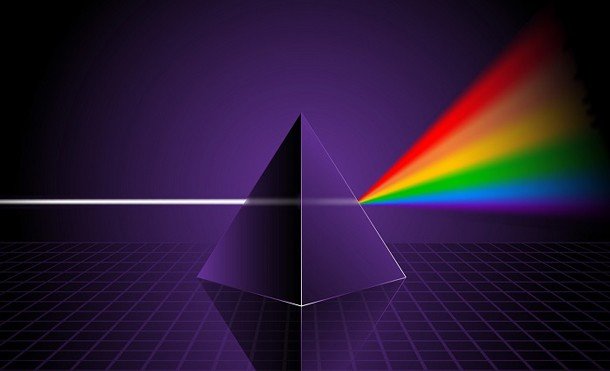The Illuminating Truth: An In-Depth Analysis of Light’s Nature and Properties
Light, the entity responsible for all visual phenomena, is a cornerstone of physics, technology, and life itself. Its fundamental nature as both a wave and a particle presents a profound duality that challenges classical intuition, while its interactions with matter through reflection and refraction govern everything from the images we see in a mirror to the functionality of global fiber-optic networks. Furthermore, the perception of color, a direct consequence of light’s properties, is a complex interplay between physics and biology. A comprehensive understanding of these facets reveals the intricate and elegant principles that underpin our illuminated world.
The Dual Identity: Light as Wave and Particle
At its most fundamental level, light is a form of electromagnetic radiation, a spectrum that encompasses everything from radio waves to gamma rays. [1][2] The sliver of this spectrum visible to the human eye, with wavelengths from approximately 380 to 750 nanometers, is what we colloquially call light. [3][4] However, the true intrigue lies in its dual nature, a concept known as wave-particle duality. [5][6] This principle posits that light simultaneously exhibits the characteristics of both continuous waves and discrete particles. Evidence for its wave-like behavior is irrefutably demonstrated by phenomena such as diffraction and interference, where light bends around obstacles or combines to create patterns, as shown in Thomas Young’s double-slit experiment. [7][8] Conversely, the photoelectric effect, where light dislodges electrons from a material, can only be explained by conceptualizing light as composed of individual energy packets called photons. [5][7] Albert Einstein’s explanation of this effect established that the energy of a photon is directly proportional to its frequency, a particle-like attribute. [6][8] This duality is not a contradiction but a fundamental aspect of quantum mechanics, indicating that classical concepts are insufficient to fully describe reality at the quantum level. [5][9] All this electromagnetic radiation travels at a constant and maximum speed in a vacuum, a value defined as approximately 300,000 kilometers per second. [10][11]
The Law of Reflection: Bouncing with Precision
Reflection, the process by which light bounces off a surface, is a ubiquitous phenomenon governed by a simple yet profound law. [12][13] The Law of Reflection has two main tenets: first, the angle of the incoming (incident) ray is equal to the angle of the outgoing (reflected) ray, and second, the incident ray, the reflected ray, and the normal (a line perpendicular to the surface at the point of impact) all lie on the same plane. [14][15] The character of the reflection is dictated entirely by the texture of the surface at a microscopic level. Smooth surfaces, such as mirrors or calm water, produce specular reflection, where parallel incident rays remain parallel after reflection, resulting in a clear, coherent image. [16][17] This is why you can see a distinct image of yourself in a polished mirror. [16] In contrast, rough surfaces like paper, wood, or asphalt cause diffuse reflection, scattering the light in myriad directions. [16][17] This scattering is what allows us to see non-shiny objects from any angle, as the reflected light disperses widely. An interesting real-world example of the difference is driving at night: a dry, rough asphalt road diffuses the light from oncoming headlights, but when wet, the water fills in the rough texture, creating a smooth surface that causes specular reflection and a dangerous glare. [17][18]
The Bending of Beams: The Principles of Refraction
When light transitions from one transparent medium to another, such as from air to water, its speed changes, causing its path to bend—a phenomenon known as refraction. [19][20] This change in speed is quantified by the material’s refractive index; a higher refractive index indicates a slower speed of light within that medium. [10][21] For example, light travels at about 225,000 km/s in water (refractive index ~1.33) and slows to about 125,000 km/s in diamond (refractive index ~2.4). [10][11] The precise relationship between the angles of incidence and refraction and the refractive indices of the two media is described by Snell’s Law, a formula discovered by Willebrord Snell in 1621. [22][23] This law dictates that when light enters a denser medium (higher refractive index), it bends toward the normal, and when it enters a less dense medium, it bends away from the normal. [23] A critical application of this principle is Total Internal Reflection (TIR). When light traveling in a denser medium strikes the boundary with a less dense medium at an angle greater than a specific “critical angle,” it does not refract out but reflects entirely back into the denser medium. [12][24] This principle is the bedrock of modern telecommunications, as it allows laser light signals to be transmitted over vast distances through optical fibers with minimal loss of data. [24][25]
The Spectrum of Sight: Physics and Perception of Color
The vibrant world of color we perceive is not an intrinsic property of objects themselves but rather a result of the interaction between light, objects, and our visual system. [26][27] White light, such as sunlight, is a composite of all the wavelengths in the visible spectrum. [3][28] When this light strikes an object, the object’s surface material absorbs certain wavelengths and reflects others. [28][29] We perceive the color of an object as the specific wavelengths of light that it reflects. For example, a green leaf appears green because it absorbs most wavelengths but strongly reflects those corresponding to green light. [29] An object that reflects all wavelengths equally appears white, while one that absorbs all wavelengths appears black. [29][30] The biological mechanism for this perception lies in the retina of the human eye, which contains photoreceptor cells known as rods and cones. [26][31] Cones are responsible for color vision in bright light and come in three types, each sensitive to different wavelengths: short (blue), medium (green), and long (red). [31][32] The brain processes the combined signals from these three cone types to construct our rich perception of millions of different colors. [26][32] Furthermore, the human brain exhibits a remarkable capability known as color constancy, which allows us to perceive the color of a familiar object as stable despite changes in the color and intensity of the illuminating light source. [33][34]



Leave your comment
You must be logged in to post a comment.